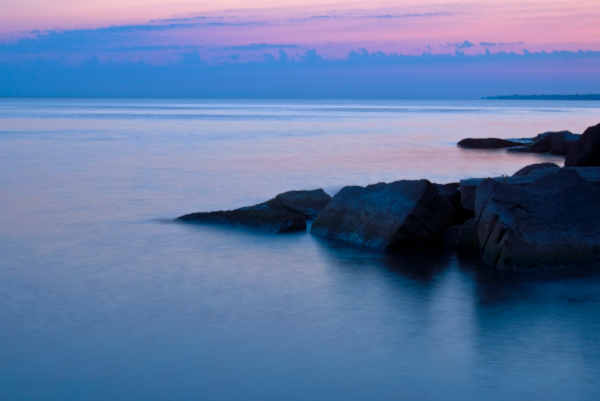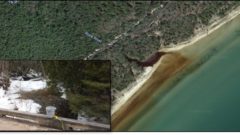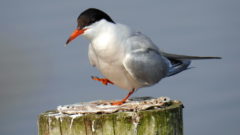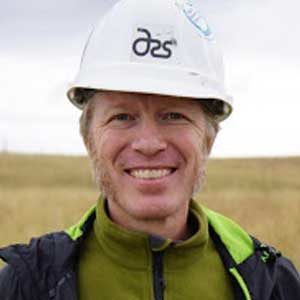Great Lakes Phragmites Collaborative releases shared approach to managing Phragmites
News
Great Lakes Phragmites Collaborative releases shared approach to managing Phragmites
Ann Arbor, Mich. – The Great Lakes Phragmites Collaborative (GLPC) today released its “Common Agenda” – a shared understanding and an agreed-upon path for addressing invasive Phragmites in the Great Lakes basin. The agenda sets goals, defines gaps and problem areas in management of Phragmites, and outlines the strategies collaborative members will use to fight invasive Phragmites.
“Addressing a widespread regional issue like invasive Phragmites requires coordination across sectors and political boundaries,” said Erika Jensen, interim executive director of the Great Lakes Commission, which coordinates the GLPC with the U.S. Geological Survey. “The Great Lakes Phragmites Collaborative is excited to release their Common Agenda to guide regional efforts in the Great Lakes basin. Working together we can be more coordinated, efficient and strategic in tackling the issue of invasive Phragmites.”
Phragmites australis (also known as common reed) is a tall, aggressive invasive grass that can displace native plants, block scenic views, decrease property values, cut off road drainage, and become a fire hazard. Though nonnative Phragmites has been present in North America for some time, it has only become a true invader in the Great Lakes region over the last few decades.
The GLPC also announced a strategic plan for the Phragmites Adaptative Management Framework (PAMF), which gathers data to determine which management approaches are the most likely to reduce a Phragmites infestation. PAMF is administered through a collaborative effort between the Great Lakes Commission, U.S. Geological Survey, and the University of Georgia. In its first three years, PAMF engaged more than 75 managers and enrolled nearly 700 acres from across the Great Lakes basin. The new PAMF strategic plan will guide program implementation over the next five years.
“Phragmites continues to spread rapidly in the Great Lakes region and millions of dollars are spent on treatments each year, so it’s critical that we identify the most effective ways to manage it,” said Dr. Kurt Kowalski of the U.S. Geological Survey Great Lakes Science Center. “PAMF is helping us resolve the uncertainty around what approach is most effective given site conditions.”
Anyone treating Phragmites, from government agencies to private landowners, can enroll in PAMF and benefit by receiving annual management guidance. Participation in PAMF also contributes to advancing the mission of the GLPC under the Common Agenda.
The Great Lakes Phragmites Collaborative was established in 2012 and brings together agencies, organizations, and citizens who are engaged with Phragmites in some way, including management, research, and communication. The GLPC is guided by an Advisory Committee that represents a binational cross-section of Great Lakes Phragmites experts. The GLPC utilizes a “collective impact” framework intended to address complex problems through collaboration with multiple organizations working at multiple jurisdictional levels. Under this approach, a common agenda is one of five conditions necessary to effect change.
The Great Lakes Commission, led by chair Sharon M. Jackson, Deputy General Counsel for Governor Eric J. Holcomb of Indiana, is an interstate compact agency established under the Great Lakes Basin Compact of 1955. The Commission is authorized by state and U.S. federal law and dedicated to promoting a strong economy, healthy environment and high quality of life for the Great Lakes-St. Lawrence Basin and its residents. The Commission consists of governors’ appointees, state legislators, industry and nonprofit leaders and agency officials from eight states and two provinces. Associate membership for Ontario and Québec was established through the signing of a “Declaration of Partnership.” The Commission maintains a formal Observer program involving U.S. and Canadian federal agencies, tribal authorities, binational agencies and other regional interests. The Commission office is in Ann Arbor, Michigan. Learn more at www.glc.org.
Great Lakes Commission
https://www.glc.org/news/phrag-110520







 The River Talk series is partnering with Café Scientifique Twin Ports with a virtual talk at 7 p.m. Wednesday, Nov. 11, via Zoom. Dustin Haines, research coordinator with the Lake Superior National Estuarine Research Reserve will present, “Should I Stay or Should I Go? The Clash of Wetlands With lake Levels, Invasives and Humans.”
The River Talk series is partnering with Café Scientifique Twin Ports with a virtual talk at 7 p.m. Wednesday, Nov. 11, via Zoom. Dustin Haines, research coordinator with the Lake Superior National Estuarine Research Reserve will present, “Should I Stay or Should I Go? The Clash of Wetlands With lake Levels, Invasives and Humans.”


